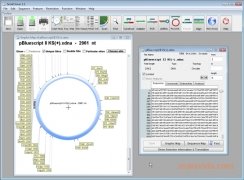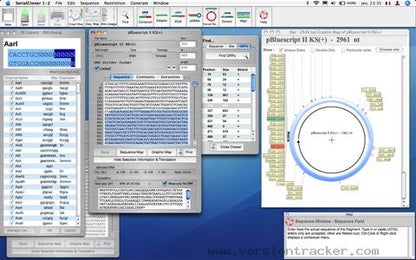
The Stockholm alignment format is also known as PFAM format. Standard Flowgram Format applying the trimming listed in the file. Standard Flowgram Format ( SFF) binary files produced by Roche 454 and IonTorrent/IonProton sequencing machines.

Truncates names at 10 characters.Ī “FASTA like” format introduced by the National Biomedical Research Foundation (NBRF) for the Protein Information Resource (PIR) database, now part of UniProt. PHD files are output from PHRED, used by PHRAP and CONSED for input. Uses Bio.PDB to determine the (partial) protein sequence as it appears in the structure based on the atom coordinate section of the file (requires NumPy). Reads a Protein Data Bank (PDB) file to determine the complete protein sequence as it appears in the header (no dependency on Bio.PDB and NumPy). The NEXUS multiple alignment format, also known as PAUP format. This refers to the IMGT variant of the EMBL plain text file format. This refers to the IntelliGenetics file format, apparently the same as the MASE alignment format. Biopython 1.48 to 1.50 wrote basic GenBank files with only minimal annotation, while 1.51 onwards will also write the features table. The native format used by Gene Construction Kit. For good quality reads, PHRED and Solexa scores are approximately equal, so the “fastq-solexa” and “fastq-illumina” variants are almost equivalent. In Biopython, “fastq-illumina” refers to early Solexa/Illumina style FASTQ files (from pipeline version 1.3 to 1.7) which encode PHRED qualities using an ASCII offset of 64.

See also what we call the “fastq-illumina” format. In Biopython, “fastq-solexa” refers to the original Solexa/Illumina style FASTQ files which encode Solexa qualities using an ASCII offset of 64. See also the incompatible “fastq-solexa” and “fastq-illumina” variants used in early Solexa/Illumina pipelines, Illumina pipeline 1.8 produces Sanger FASTQ. In Biopython, “fastq” (or the alias “fastq-sanger”) refers to Sanger style FASTQ files which encode PHRED qualities using an ASCII offset of 33. This refers to the input FASTA file format introduced for Bill Pearson’s FASTA tool, where each record starts with a “>” line.įASTA format variant with no line wrapping and exactly two lines per record.įASTQ files are a bit like FASTA files but also include sequencing qualities. The alignment format of Clustal X and Clustal W. Reads a macromolecular Crystallographic Information File (mmCIF) file to determine the complete protein sequence as defined by the _pdbx_poly_seq_scheme records. Uses to determine the (partial) protein sequence as it appears in the structure based on the atomic coordinates.

Reads the contig sequences from an ACE assembly file. Same as “abi” but with quality trimming with Mott’s algorithm. Note each ABI file contains one and only one sequence (so there is no point in indexing the file). Reads the ABI “Sanger” capillary sequence traces files, including the PHRED quality scores for the base calls. Possible we use the same name as BioPerl’s The format name is a simple lowercase string. Git to indicate this is supported in our latest inĭevelopment code).

Index, with the Biopython version where this was first supported (or This table lists the file formats that Bio.SeqIO can read, write and Requirements, I hope this should suffice. My vision is that for manipulating sequence data you should tryīio.SeqIO as your first choice. ForĮxample, Bio.Nexus will also read sequences from Nexus files - butīio.Nexus can also do much more, for example reading any phylogenetic
#SERIAL CLONER FEATURE IMPORT GENBANK HOW TO#
Note that the inclusion of Bio.SeqIO (andīio.AlignIO) in Biopython does lead to someĭuplication or choice in how to deal with some file formats. The design was partly inspired by the simplicity of BioPerl’sīioPerl’s impressive list of supported sequence file There is a sister interface Bio.AlignIOįor working directly with sequence alignment files as Alignment objects. (which you can read online, or from within Python with the helpīio.SeqIO provides a simple uniform interface to input and outputĪssorted sequence file formats (including multiple sequence alignments),īut will only deal with sequences as SeqRecord Start with working with sequence files using SeqIO.īio.SeqIO, and although there is some overlap it is well worth reading Python novices might find Peter’s introductory Biopython This page describes Bio.SeqIO, the standard Sequence Input/Output


 0 kommentar(er)
0 kommentar(er)
